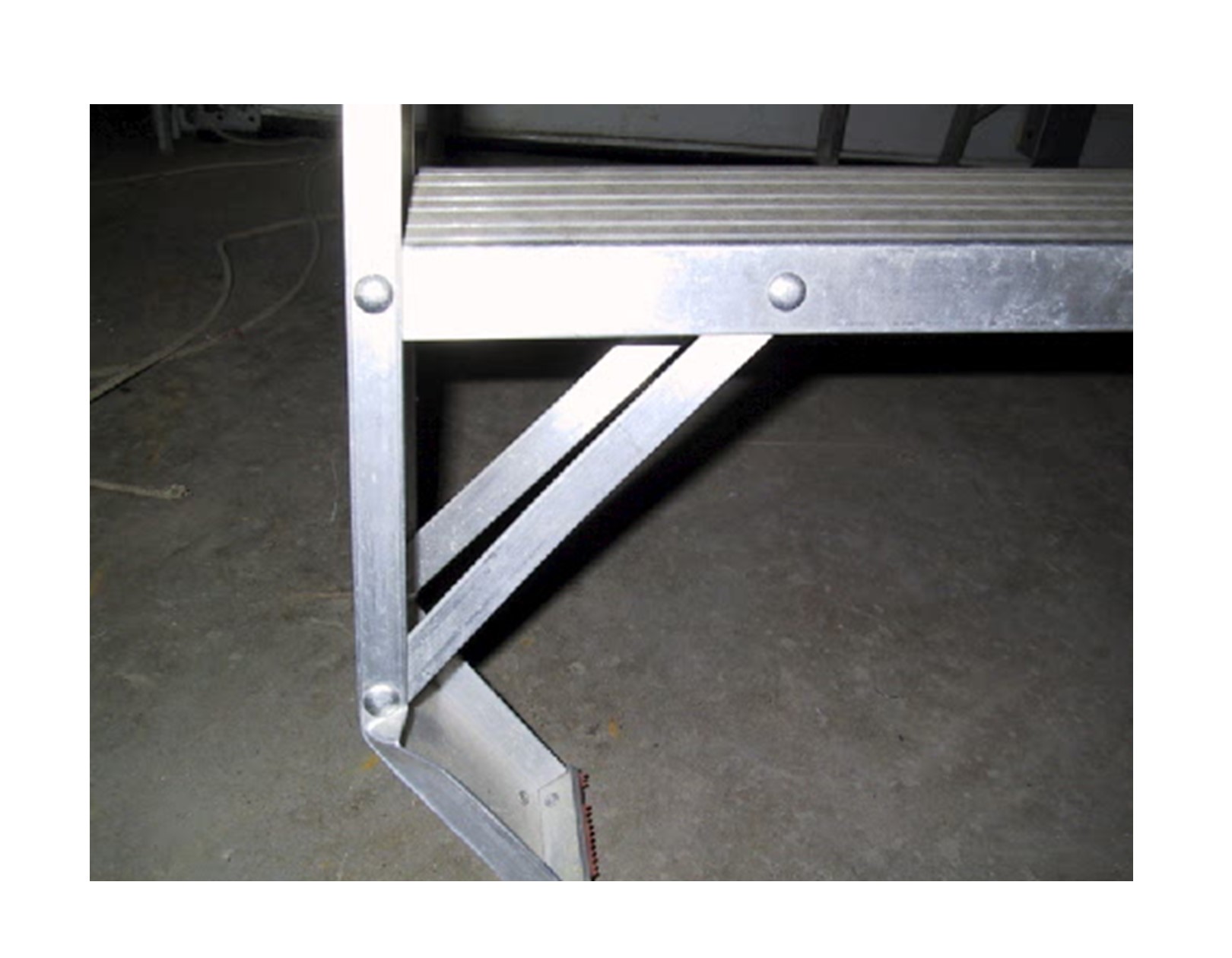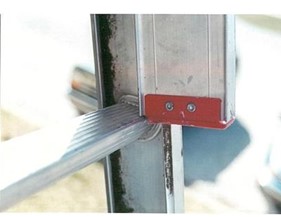Ladder Accidents - Stepladder, Extension Ladder, Fixed Ladder, Attic Ladder, Articulated Ladder Accidents
By John L. Ryan, P.E. / First published August 2012

Ladder accidents are extremely common. Ladder accidents can be classified in several
categories, including falls from ladders, tipping/sliding of ladders, failure
of extension ladder systems, and catastrophic failure of ladders or of ladder
components. We have investigated these
accidents and ladder failures for decades.
For attorneys involved in personal injury work, it is critical to
determine what the cause of an accident is.
Our experience has given us insight into making the distinction between
the different causes of ladder accidents.
This is an update to our previously published works on ladder accidents.
Falls from Ladders
Some ladder accidents involve the ladder user losing his or her balance and falling from the ladder. These cases are normally easily identified because there will be no damage to the ladder, yet there may be significant injuries to the ladder user.
Tipping/Sliding Ladders
Another ladder accident model is tipping of the ladder, whether it is a stepladder or extension ladder. Tipping of a stepladder may be due to design defects of the ladder which result in excessive instability and racking of the ladder.
A ladder tipping will result in the user falling to the ground. Under certain rare circumstances, a user may ride the ladder as it falls. If the tipping is due to a poorly designed and unstable ladder, then a suit against the ladder manufacturer may be in order. Gathering as much evidence is critical in these cases.
Ladders can also slip out. This can occur on stepladders used in the straight ladder configuration, but normally occurs on extension ladders. Ladder slip-out can be due to a combination of multiple factors, including inadequate friction at the feet of the ladder, the angle the ladder is set up at, the ground surface material, condition, and angle, whether someone is holding the base of the ladder, the friction between the ladder and the surface it is leaning against, and more.
Catastrophic Failure
Catastrophic failure of a critical ladder component can cause a ladder to collapse, or to cause enough sudden movement to knock the person from the ladder. The most commonly seen failures include ladder rail failure (typically seen at or below the first rung), rivet failure, stabilizer bar failure, and ladder foot failure (extension ladder failure)

Lower Stepladder Leg Failure
Ladder Rail Failure
Often stepladders involved in accidents present with a bent main front ladder rail. There may be a bend in one or more of the legs.

Racked Ladder
This can indicate a catastrophic failure of the lower leg due to racking of the ladder as the initiating event of the accident. Racking occurs when the rear section of a stepladder becomes offset to the side. This results in one or more legs of the ladder not contacting the ground, which places greater stresses on the ladder legs that are in contact with the ground.
Permanently Racked Ladder
Some ladders will present with a permanent side set, or rack, in them after an accident has occurred, with no actual rail deformation. This can be caused by the user falling on the mid section of the ladder rail(s). The tipping that led to the fall may have been caused by an unstable and racked ladder. Stronger, more rigid ladders resist racking and prevent tipping.
Extension Ladder Specific Failures
Extension ladders have unique properties that result in unique accidents. Accidents occur when an extension ladder is extended, then climbed, and the upper ladder section collapses downward, which can result in the ladder user falling to the rear of the ladder, or it can cause the ladder to tip. The fly-locks which connect the two ladder sections and allow adjustability of ladder height can false-lock on the ladder, which means that the ladder can temporarily hold some amount of weight, but can collapse at any moment. This can be due to the gate or tip of the fly-lock itself resting on a ladder member without being fully engaged. This can also occur due to the end of the upper ladder section resting on a lower ladder step, without the fly-locks engaged. These types of accidents will often result in a collapsed but not locked ladder.

Extension Ladder Fly Section Hits on Base Section Rung
Recommendations
Take detailed pictures of the accident scene and injuries to your client. Give us a call at (479) 549-4860 or email us at info@mase.pro and let us help you determine the cause of your client's ladder accident, and whether it was due to a ladder defect.
The End of Type III Ladders!!!!
For years we have seen many accidents occurring on flimsy, cheap Type III stepladders. Manufacturers are phasing this ladder type out altogether. Many major ladder manufacturers no longer produce these ladders. We expect a decrease in the number of ladder accidents to result from this. This is a victory for ladder safety.